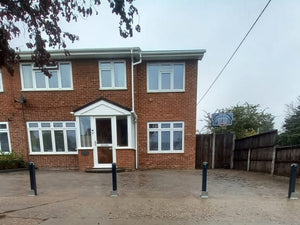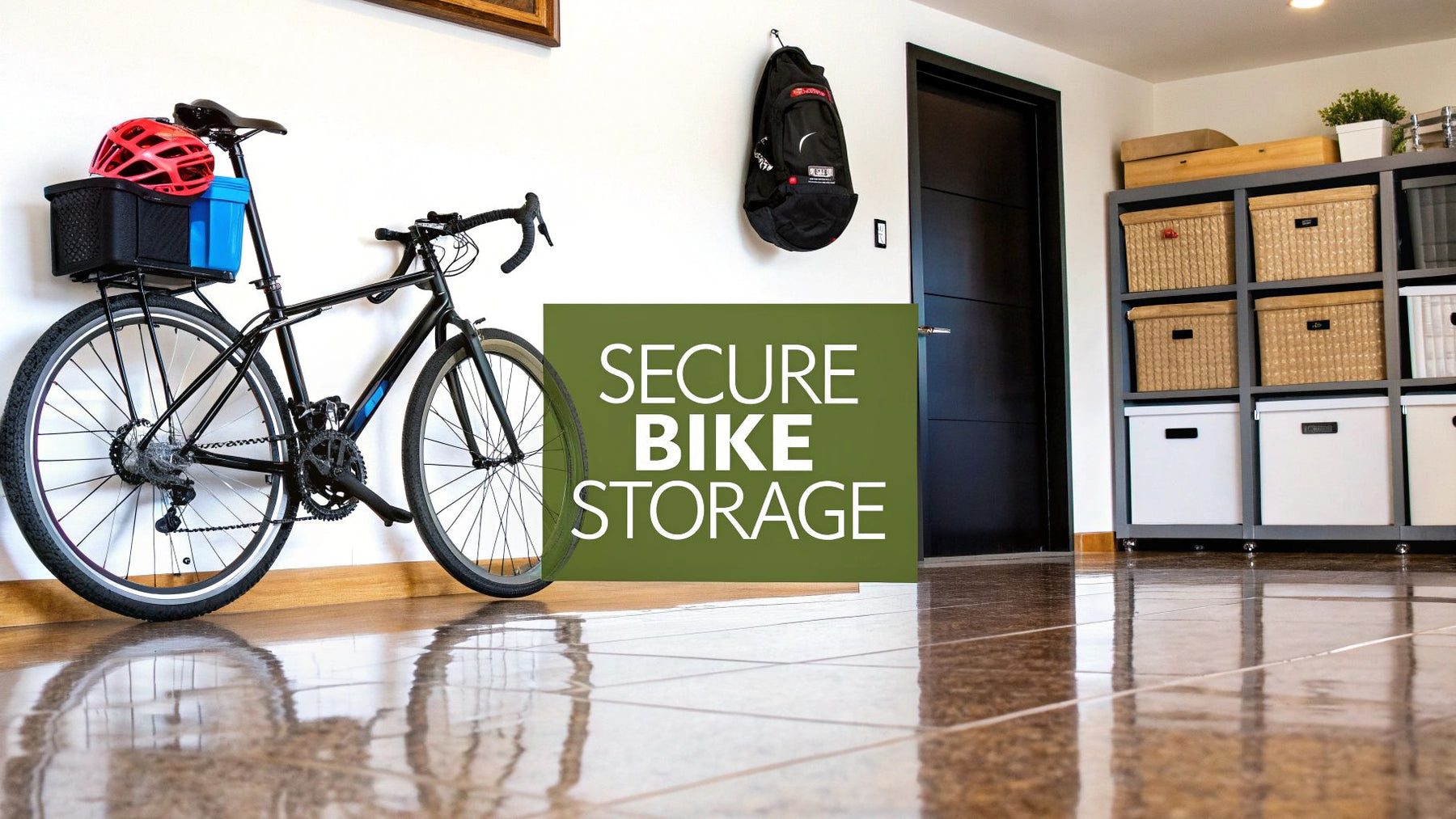
Bike Racks for the Home: Your Guide to Secure Storage
Are you constantly tripping over bikes in the hallway? Is your garage space slowly being eaten up by a two-wheeled takeover? As a family-owned British company that’s been helping homeowners with security since 1972, we’ve seen it all. If this sounds familiar, it's time to move beyond leaning them against the wall and hoping for the best. Finding the perfect bike racks for the home is about creating a secure, organised, and surprisingly stylish storage solution that protects your bikes from both damage and theft.
Reclaim Your Space With Smart Bike Storage
It’s a classic scene in homes across the UK: bikes propped up in hallways, crowding out the shed, or making the garage a no-go zone. As a nation, we've fallen even more in love with cycling recently. That boom means a lot more of us are now facing the same challenge: where on earth do we keep them all?
Getting your cycle storage right isn't just about being tidy. It's about protecting your pride and joy and making your daily life a bit smoother. A well-chosen, British-made rack is a game-changer.
-
Better Security: A properly fitted rack is a serious deterrent for would-be thieves, which is non-negotiable for any bike owner.
-
More Floor Space: By going vertical and using your wall space, you suddenly free up room for the car, the lawnmower, or just more space to move.
-
No More Damage: Storing bikes properly puts an end to the scraped paint, bent gears, and tangled handlebars that come from a bike pile-up.
-
Grab-and-Go Access: When your bike is easy to get to, you're much more likely to head out for a spontaneous ride. No more digging it out from behind a mountain of clutter.
This is where a simple wall-mounted solution can completely transform a cluttered space into something organised and functional.
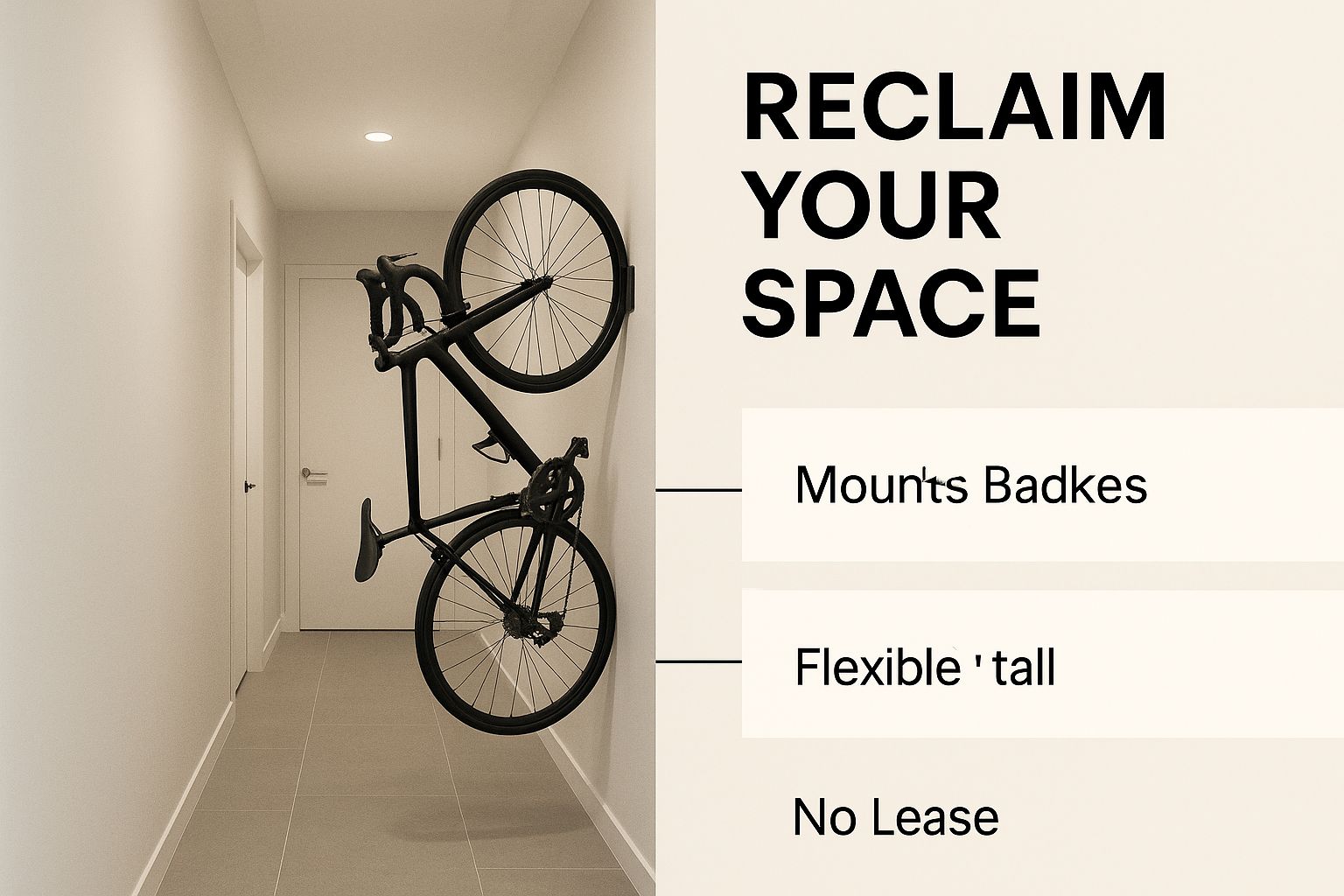
The real magic of modern bike racks is their ability to turn empty, unused vertical space into genuinely practical storage. If you're really tight on room, exploring ingenious bike storage solutions for small apartments can open up a world of possibilities.
Whether you need a robust ground-anchored stand or some sleek, space-saving wall-mounted bike racks, there's a perfect fit for every type of home. As a family-owned British company since 1972, we're all about helping you find a high-quality, long-lasting solution that gives you complete peace of mind with our 2-year warranty.
Exploring Different Types of Home Bike Racks
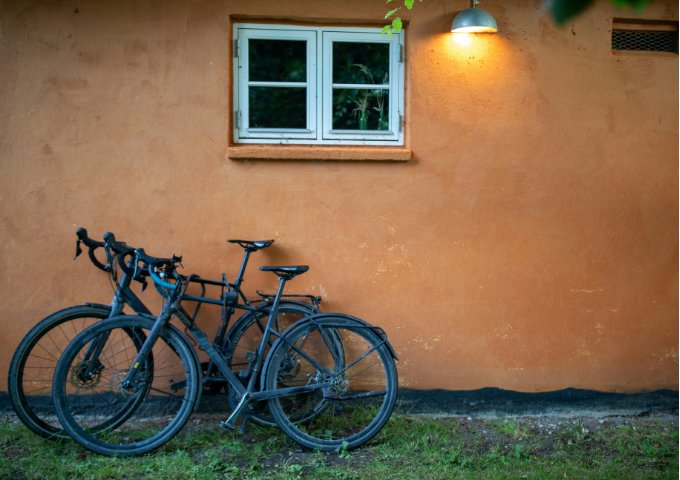
Choosing the right bike rack is a lot like picking the right tool for a job. You wouldn't use a hammer to turn a screw, and the best storage solution comes down to your space, your bikes, and how you use them. The world of bike racks for the home is surprisingly varied, so let's walk through the main options to find the perfect fit for you.
For many UK homeowners, especially those in terraced houses or modern flats, floor space is the ultimate luxury. This is where wall-mounted racks truly shine. They transform unused vertical surfaces into clever, efficient storage and are the undisputed champions of decluttering.
Wall-Mounted Racks The Space Savers
Wall-mounted options are perfect for garages, sheds, or even hallways when installed correctly. By lifting your bikes off the ground, they instantly free up that precious floor area for your car, a workbench, or just more room to move.
They typically come in a few key designs:
-
Vertical Racks: These are incredibly space-efficient, especially if you need to store several bikes side-by-side. The bike hangs from its front wheel, taking up very little wall width. It's an excellent choice for a narrow garage or the side of a shed.
-
Horizontal Racks: A horizontal rack holds the bike frame parallel to the wall, almost like a piece of art. This style is ideal if you have more wall width than depth, as it keeps the bike incredibly flat and out of the way.
-
Pivoting Racks: Offering the best of both worlds, these racks let you hang your bike and then swing it flat against the wall. This is a fantastic feature for tight spaces like narrow corridors, keeping the bike completely clear of walkways.
When it comes to wall-mounted racks, the most critical factor is the wall itself. You absolutely must secure it to solid brick, concrete, or directly into the wooden studs behind plasterboard. Fixing it to plasterboard alone is a recipe for disaster.
Floor-Standing Racks Stability and Simplicity
If you have the floor space and would rather not drill into your walls, floor-standing racks offer superb stability and are a breeze to use. There’s no heavy lifting involved; you just roll your bike into place. This makes them a great option for heavier bikes or for households where everyone, including younger family members, needs easy access.
Floor-standing designs can range from simple, single-bike stands to more robust units that hold the whole family's collection.
Expert Insight: For families or cycling enthusiasts with multiple bikes, a Sheffield stand is a classic and incredibly effective solution. Its simple, robust design allows you to securely lock up two bikes per stand, offering excellent security and organisation for a driveway or garden.
These racks are often heavier and can be bolted to the ground for maximum security, turning a simple stand into a proper anti-theft device. For a solution that delivers both convenience and top-notch security, a floor-mounted bike rack is an excellent choice.
Ceiling Hoists The Ultimate Space Solution
For those with very limited room but high ceilings, a ceiling hoist is an ingenious solution. These systems use pulleys to lift your bike up and completely out of the way, storing it in the unused space above your head.
While the installation is more involved, the payoff is huge. Your bike becomes practically invisible, freeing up 100% of your floor space. It's a popular choice for single-car garages where both the car and bike need to coexist peacefully.
Racks for E-Bikes A Heavier Challenge
The rise of e-bikes has introduced a new challenge: weight. Electric bikes can easily weigh over 25kg, which is far too heavy for many standard racks designed for lightweight road or hybrid bikes.
When storing an e-bike, you must check the rack's maximum weight capacity.
-
Look for heavy-duty construction: Prioritise racks made from thick, solid steel.
-
Consider ease of use: Floor-standing racks with a simple roll-in design are often best, as they eliminate the need to lift a heavy bike.
-
Check wall-mount specifications: If you do opt for a wall-mounted e-bike rack, ensure it's specifically rated for the higher weight and is fixed into a very solid wall with appropriate hardware.
By thinking about these main types, you can start to match a solution to your home. Consider your available space, the number and type of bikes you own, and how often you need to get to them. This will quickly narrow down your options and lead you to the perfect storage system.
Prioritising Security to Protect Your Investment
A good bike rack does more than just hold your bike; it's a vault for your pride and joy. With the unfortunate reality of bike theft being a constant worry across the UK, securing your bike at home is simply non-negotiable. It’s time to shift your thinking from merely ‘storing’ your bike to actively ‘securing’ it, creating a robust defence that protects your property 24/7.
The features of a rack are what turn it from a simple stand into a real deterrent. Let's be honest, a flimsy, lightweight rack is little more than a minor inconvenience for a determined thief. This is why the materials and construction are the first things you need to look at.
The Foundations of a Secure Rack
At its core, any high-security bike rack must be built from strong, durable materials. Solid steel is the gold standard, offering a formidable barrier against cutting or brute-force attacks. When you see a rack made from thick, heavy-gauge steel, you know it's been designed with driveway protection and security as a primary goal, not just convenience.
Equally important are the fixings. A rack is only as strong as its weakest point, and that often comes down to the bolts used to secure it.
-
Tamper-Resistant Fixings: Look for racks that use security bolts or have shielded fixings. These make it much harder for a thief with a basic toolkit to simply unbolt the entire rack from the wall or floor.
-
Ground Anchoring: For floor-standing racks, the ability to bolt them directly into concrete is a game-changer. A ground-anchored rack becomes an immovable object, forcing a thief to confront the lock itself rather than just carrying the whole setup away.
-
Solid Wall Mounting: For wall-mounted racks, security comes from a solid connection to brickwork or concrete. This creates a far tougher challenge than a rack that is simply freestanding or attached to a weak surface.
These physical features are your first line of defence in a solid cycle storage strategy.
Understanding Sold Secure Ratings
When you’re looking at locks, chains, and even some bike racks, you'll often see a 'Sold Secure' rating. This isn't just a marketing term; it’s a trusted benchmark for security products here in the UK. As an independent organisation, Sold Secure tests security products against all sorts of attack methods, providing a reliable measure of their strength.
A product with a Sold Secure rating has been physically tested and proven to withstand a certain level of attack. Choosing a rated rack or using a rated lock gives you certified protection and genuine peace of mind.
Their ratings (Bronze, Silver, Gold, and Diamond) tell you the level of security offered, giving you a clear and reliable way to judge a product's effectiveness. Pairing a robust, British-made steel rack with a Gold-rated lock creates a seriously formidable security combination. For a deeper dive into creating a layered defence, you can learn more about how to securely store and protect your bike.
Creating a Layered Defence System
True vehicle security is about creating layers. Your bike rack is the anchor point, but it works best as part of a wider system. It's even worth looking at how other vehicles are protected; insights from secure motorcycle storage solutions can offer valuable perspectives on security features that translate well to bikes.
Think about it from the thief's point of view: first, they have to get onto your property. Then they have to find the bike. After that, they have to defeat the lock and the rack itself. By making each step as difficult and time-consuming as possible, you massively increase the chances of them giving up and moving on. A secure rack is the heart of this strategy.
Finding the Perfect Location for Your Bike Rack
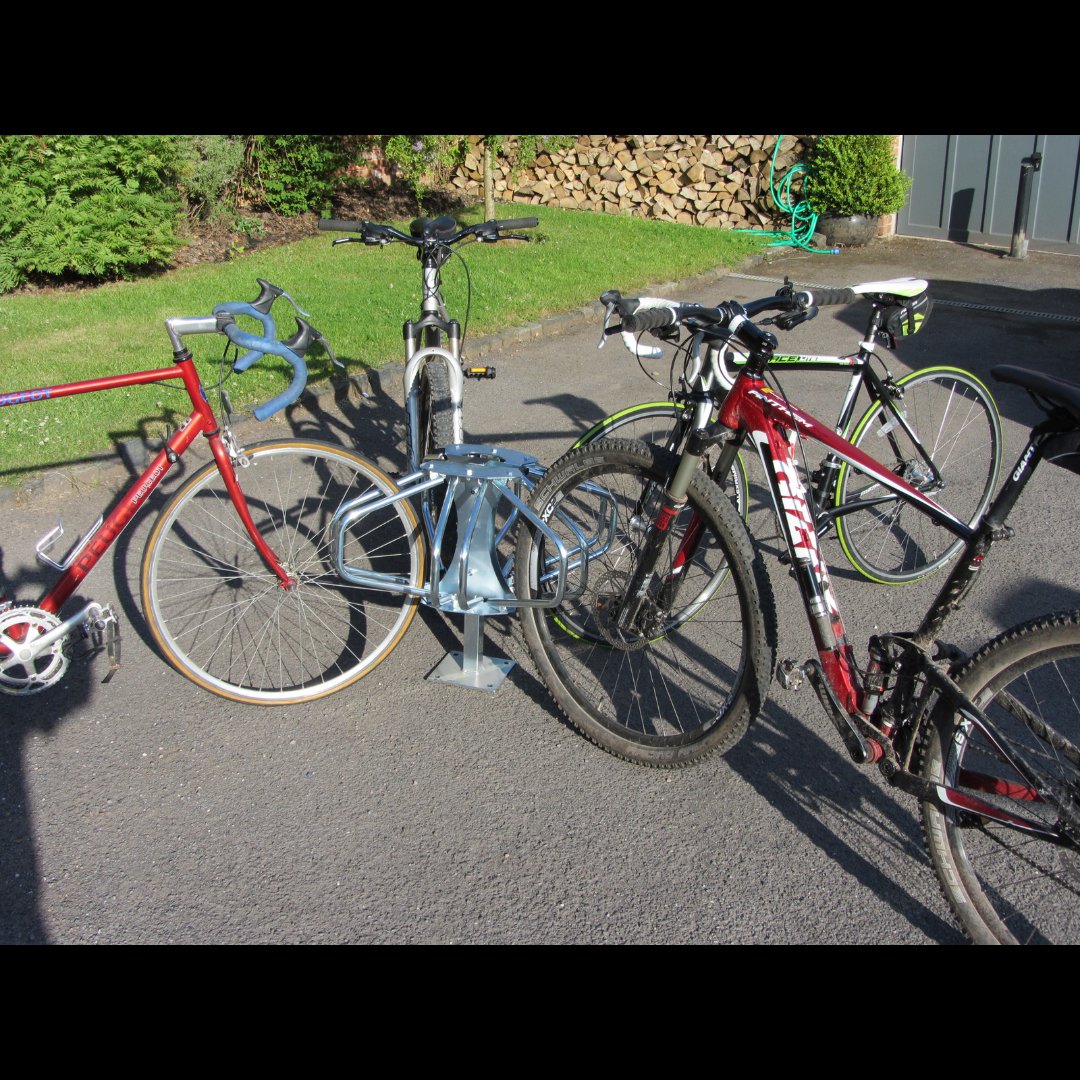
You’ve invested in a robust, British-made rack to protect your pride and joy; now for the second most important decision: where on earth to put it? The location of your bike racks for the home is just as critical as the rack itself. A brilliant bit of kit in the wrong place can be inconvenient at best and a massive security risk at worst.
The goal is to find that sweet spot between daily convenience and rock-solid vehicle security. You need a place where your bike is shielded from opportunistic thieves and the classic British weather, but is still easy to grab when you fancy a ride. Let's run through the most common spots and what you need to consider.
The Garage A Classic Choice
For many of us, the garage is the default choice, and for good reason. It’s typically secure, offers fantastic protection from the elements, and most importantly, keeps your bike out of sight and out of mind for potential thieves.
But even in a garage, placement is key. Don’t just slap the rack on the first bit of empty wall you see. Think about your daily routine. Is the bike going to get in the way of the car door? Will you have to Tetris your way past lawnmowers and storage boxes every single time you want to get it down? A little thought here goes a long way.
The Garden Shed A Solid Alternative
A decent garden shed can be another excellent home for your cycle storage. It keeps the bikes completely separate from your main living space and provides great shelter from whatever the weather throws at it.
The main thing to think about here is the shed's own security. A flimsy wooden shed with a basic padlock is an open invitation to thieves. If you’re going down the shed route, make sure you upgrade its lock and maybe even consider a simple shed alarm. Critically, anchor your rack to a solid concrete base if you can, not just the flimsy wooden floorboards.
Inside Your Home The Ultimate Convenience
For those in flats or homes without a garage or shed, an indoor rack is often the only way to go. While it offers unmatched security and weather protection, it does bring its own set of challenges.
You’ll need to be mindful of scuffing walls or dripping rainwater onto the carpet after a wet ride. Horizontal or pivoting wall-mounted racks are often the best bet for hallways or spare rooms, as they keep the bike flush against the wall and out of the main walkway. Always, always make sure you are mounting into solid brickwork, not just plasterboard.
Side Returns and Gardens Outdoor Options
Storing your bike outside is where you need to put the most thought into security and protection. A side return can be a brilliant, out-of-sight spot, but it absolutely must be behind a properly locked gate.
Our Recommendation: If you're storing a bike outdoors, a ground-anchored rack made from galvanised steel is non-negotiable. It provides an immovable locking point and will resist rust for years. Pairing this with a heavy-duty, waterproof cover is essential to protect your bike's delicate components.
For a bit more inspiration on making the most of your exterior space, have a look at our guide to clever outdoor bike storage ideas.
Before you get the drill out, it pays to run through a few potential locations in your head. This quick checklist can help you weigh up the pros and cons of each spot.
Location Suitability Checklist
Evaluate potential installation spots for your bike rack using these key criteria.
Criteria |
Garage |
Shed |
Indoors (Hallway/Room) |
Garden/Side Return |
|---|---|---|---|---|
Accessibility |
Good, but watch for clutter and car doors. |
Generally good, unless the shed is packed. |
Excellent, but can obstruct walkways if not placed well. |
Varies; can be awkward in narrow spaces. |
Security |
High, especially with a locked door. |
Moderate; depends heavily on shed quality and locks. |
Very high, as it's inside your home. |
Low, unless behind a high, locked gate and out of sight. |
Weather Protection |
Excellent. Fully protected from rain and sun. |
Good. Protects from rain but can get damp. |
Excellent. The best protection possible. |
Poor. Relies entirely on a good quality bike cover. |
Wall/Floor Suitability |
Excellent. Concrete floors and brick walls are ideal. |
Mixed. Concrete base is best; wooden floors are weak. |
Good, but requires finding solid brick, not plasterboard. |
Good for ground anchors if you have a solid patio or concrete base. |
A few minutes of planning now can save you a world of hassle later on. By carefully thinking through your options, you'll find the perfect home for your bike—a spot that keeps it safe, sound, and ready for your next adventure.
Making Installation and Maintenance Simple
A top-quality bike rack is a fantastic investment, but it's only ever as strong as its installation. The thought of drilling into walls or concrete can seem a bit intimidating, but we’re here to take the mystery out of it. Our aim is to give you the confidence that your bike racks for the home are fitted correctly and will last for years to come.
Whether you're a seasoned DIYer or someone who'd rather call in the professionals, a secure fitting is non-negotiable. We've been helping UK homeowners with security solutions since 1972, so we know that proper installation is where real peace of mind comes from.
The DIY Approach: Getting a Rock-Solid Fit
For the hands-on type, installing a bike rack is a perfectly manageable weekend project. With the right tools and a little bit of prep, you can achieve a professional-grade fit that gives you excellent vehicle security.
Before you even think about picking up a drill, the most important step is to figure out what's behind the wall or under the floor.
Safety First: Always use a stud and pipe detector before you start drilling. Hitting a hidden water pipe, gas line, or electrical cable can turn a simple job into a dangerous and expensive disaster. Taking a minute to scan the area is easily the most crucial part of the whole process.
Once you know the area is clear, getting the right tools together will make the job go much more smoothly. You'll usually need a good quality drill, the correct drill bit for the surface (masonry for brick, wood for studs), a spirit level, and a socket set or spanner.
Here’s a quick rundown of what’s involved:
-
Position and Mark: Hold the rack where you want it and use a spirit level to get it perfectly straight. Then, mark the drill holes with a pencil.
-
Drill the Holes: Using the right drill bit, create the pilot holes for your fixings. For brick or concrete, you’ll need to pop in some rawl plugs first.
-
Secure the Rack: Line the rack up with the holes and tighten the bolts securely. You don't want to overtighten them, but make sure there’s absolutely no wobble or movement.
A solid fitting into brick or concrete will give you the most secure anchor point you can get, making your rack a formidable part of your driveway protection system.
Professional Installation for Ultimate Peace of Mind
Of course, we completely get that not everyone has the time, tools, or confidence to tackle the installation themselves. For total peace of mind and a guaranteed secure fit, our professional installation service is the perfect answer.
Our experienced, in-house teams handle absolutely everything for you. They have the specialist tools and know-how to make sure your rack is installed to the highest British standards, no matter the surface. This service is especially handy for ground-anchored racks that need to be set in concrete, guaranteeing a permanent and incredibly secure anchor for your cycle storage.
Simple Long-Term Maintenance
One of the best things about our British-made steel bike racks is just how little looking after they need. They're built to stand up to the UK weather and years of daily use. That said, a quick check-up once or twice a year will keep your rack in top condition.
-
Check the Fixings: Give the bolts a quick check to make sure they're still tight and secure.
-
Inspect for Wear: Have a look for any signs of surface rust (very unlikely on our galvanised or powder-coated finishes) or damage.
-
Clean When Needed: A simple wipe-down with a damp cloth is all it takes to keep it looking smart.
This simple routine only takes a few minutes but ensures your rack’s security is never compromised. All our products also come with a 2-year warranty, giving you total confidence in their long-term durability. By following these straightforward installation and maintenance steps, your bike rack will provide a safe and secure home for your bikes for many years to come.
Your Home Bike Rack Questions Answered
When you're looking to buy a bike rack, you're bound to have a few questions. As a family-run British company that’s been helping homeowners with security since 1972, we've heard them all. We’ve put together some of the most common queries we get about bike racks for the home to give you clear, straightforward answers.
What's the Best Type of Bike Rack for a Small Flat or Apartment?
For those of us in smaller spaces like flats or modern terraced houses, every bit of floor space counts. This is where wall-mounted racks really shine. They make fantastic use of vertical space that would otherwise just be empty wall, getting your bike up and out of the way.
A vertical wall rack, where the bike hangs neatly by its front wheel, is often the most space-savvy design you can get. It takes up very little horizontal wall space, so you can usually tuck one into a narrow hallway or a small alcove without any trouble.
If you really want to maximise your space, look for a model that can swivel. This lets you push the bike almost flat against the wall, keeping it well clear of anyone walking past. It's a perfect solution for busy areas where a bike sticking out would be a constant headache.
Crucial Installation Tip: The strength of a wall-mounted rack is only as good as what it's fixed to. You absolutely must mount it to a solid surface like brickwork or directly into the wooden studs behind plasterboard. Attaching a heavy bike to plasterboard alone is a recipe for a damaged wall and a broken bike.
If you're renting and drilling holes isn't on the cards, you could look at freestanding 'gravity' stands or floor-to-ceiling 'tension' poles. Just bear in mind that these offer far less security than a properly bolted-in rack.
Can I Install a Bike Rack Outside in My Garden?
Yes, you certainly can. Putting a bike rack outside is a great way to keep muddy bikes out of the house and is a really popular choice across the UK. When you're setting up your cycle storage outdoors, though, your two biggest concerns have to be security and weather protection.
First off, choose a robust, ground-anchored rack made from galvanised steel. The ground anchor gives you a solid, immovable object to lock your bike to, which is a massive turn-off for thieves. The galvanised finish is key to stopping rust and making sure the rack can handle the famously damp British weather for years.
Next, have a good think about where you put it. Ideally, you want to install it somewhere that isn't easily seen from the street – behind a locked side gate or in a tucked-away part of the garden is perfect. The less visible your bike is, the less of a target it becomes.
To protect your bike from the elements, always use a high-quality, waterproof bike cover. This will shield delicate parts like the chain and gears from rain, rust, and sun damage. For the ultimate in driveway protection and outdoor storage, a proper bike shed or locker gives you total security and complete shelter from the weather.
How Do I Securely Lock My Bike to a Home Rack?
Best practice is always to lock both the frame and the wheels to the rack. A thief can whip off an unlocked wheel in seconds, so you need a proper locking strategy for true vehicle security.
Use a high-quality, Sold Secure rated D-lock or a heavy-duty chain as your main lock. The best way to do it is to pass the D-lock through your bike's main frame (the rear triangle is a good spot), through the rim of the back wheel, and then around the solid structure of the bike rack itself. With one move, you've locked the two most valuable bits – the frame and rear wheel – to your security anchor.
For an extra layer of security, add a secondary cable lock. You can loop this through your front wheel and then connect both ends back to your main D-lock. This makes sure every key part of your bike is secured. The most common mistake people make is locking just the wheel to the rack; a thief will simply undo the wheel and walk off with the rest of your pride and joy.
Are Bike Racks Strong Enough for Heavy Electric Bikes?
This is a great question, and one we're hearing more and more. Not all racks are built the same, and that's especially true when you're dealing with the extra heft of an e-bike, which can often weigh over 25kg.
You must always check the manufacturer's maximum weight capacity before you buy a rack for your e-bike. Trying to use a standard rack designed for a lightweight road bike just isn't safe and is very likely to fail.
For e-bikes, we strongly suggest one of two options:
-
Heavy-Duty Floor-Standing Racks: These are often the best bet as they're built for bigger loads and don't require any heavy lifting. You can just roll the bike into place.
-
Specialised Wall-Mounted Racks: If you need a wall-mounted solution, make sure it is specifically designed and rated for the weight of e-bikes. These often have a 'roll-on' design or even a gas-assist lift to help you get the heavy bike up without straining your back.
By taking a moment to ask these questions, you can be sure you're picking a solution that's a perfect fit for your bike, your home, and your security needs.
Ready to find the perfect British-made storage solution for your bikes? At Bison Products, we offer a wide range of high-quality, secure bike racks designed for UK homes. Protect your investment today.

